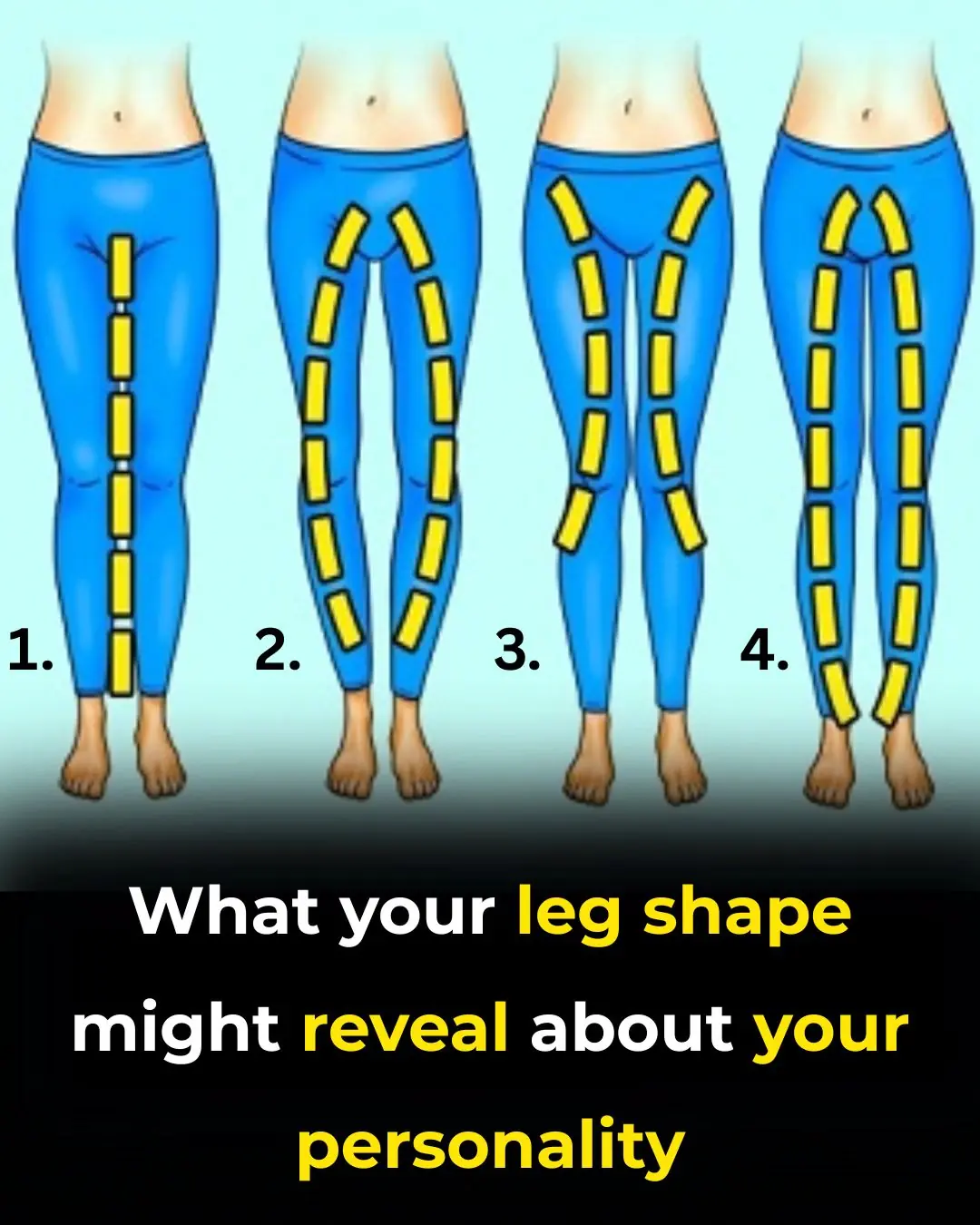
Scientists Discover Dogs Dream About Playing With Their Owners
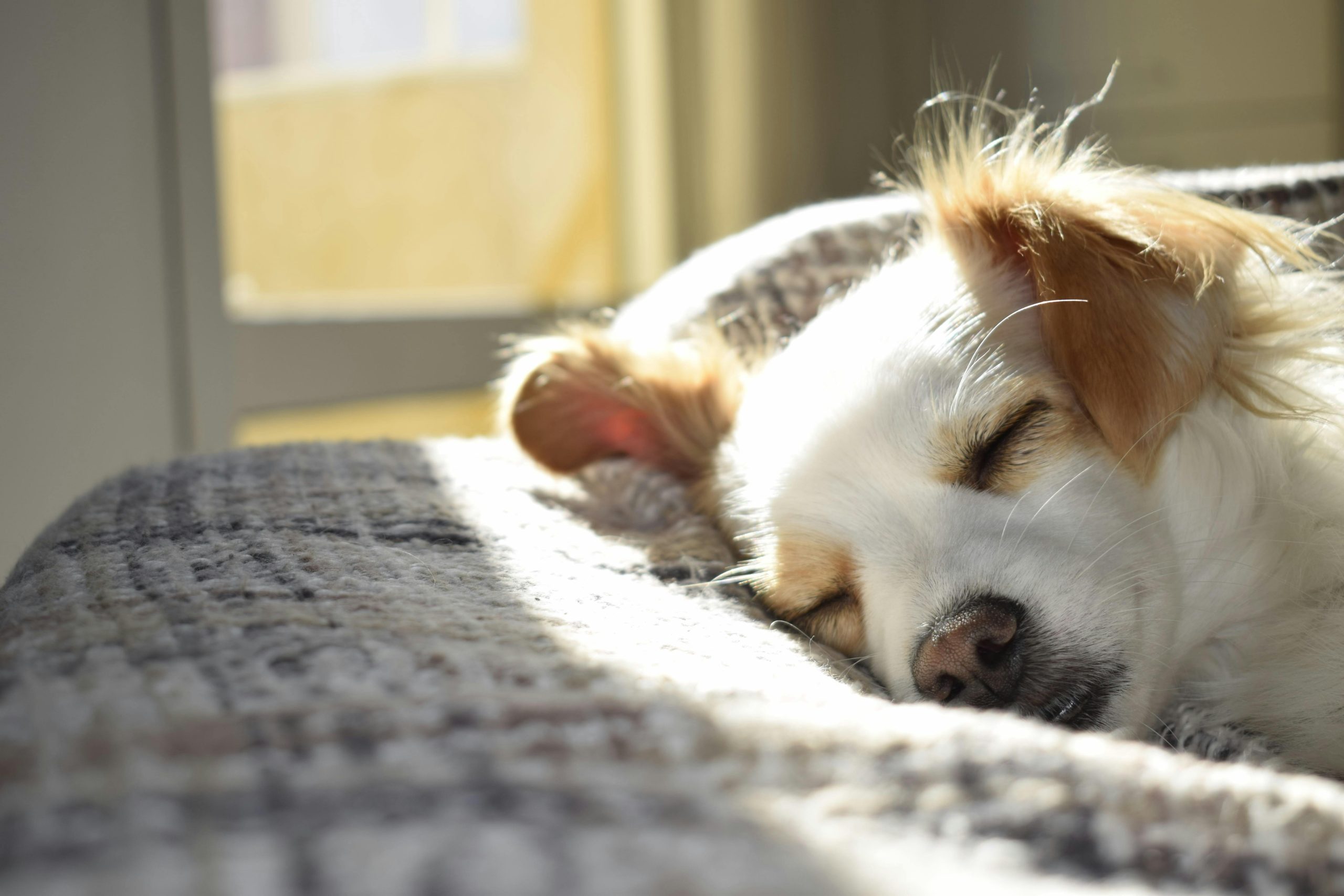
Do Dogs Dream About Us? The Science and Wonder of Canine Sleep
Your dog is stretched out on the couch, lost in slumber. Their paws twitch, their nose gives a little wiggle, and a muffled bark escapes into the stillness of the room. For a brief moment, it looks as though they’re chasing something invisible—perhaps sprinting across an open field, leaping into a pond, or bounding after a squirrel. But what if those movements are more than random bursts of activity? What if your dog is remembering—and dreaming of you?
Scientists estimate that most dogs sleep between 12 and 14 hours a day, often in several stretches. During much of that time, they cycle into REM sleep (rapid eye movement), the stage in which vivid dreams occur. In humans, REM is when the brain replays important moments of the day—snippets of laughter, stressful situations, or even fleeting details we didn’t know we stored. Evidence suggests dogs do something very similar, stitching together their daily experiences into dreams that feel strikingly familiar.
Since you are at the center of their world—the source of meals, belly rubs, evening walks, and soothing words—it makes perfect sense that you may also be at the center of their dreams. Behind those flickering eyelids could be yesterday’s game of fetch, the warmth of curling up by your side, or the joyful anticipation of hearing your footsteps at the door.
The Science of Canine Sleep
If sleep is a stage play, dogs are master performers, moving through complex cycles that set the backdrop for dreaming. Like humans, their nights alternate between calm, restorative phases and bursts of intense brain activity when entire dreamscapes unfold.
-
How much do they sleep? Adult dogs average 12–14 hours a day, though puppies and senior dogs often sleep even more.
-
Sleep stages: Rest begins with slow-wave sleep, a deep and restorative state when breathing steadies and the body repairs itself. After about 20 minutes, dogs usually enter REM sleep, when dreams occur.
-
Signs of dreaming: Eye movements, paw twitching, tail wags, or soft vocalizations often reveal that the mind is busy replaying life events.
The evidence for animal dreams is strong. In a famous MIT study, researchers recorded rats running a maze, then monitored their brain activity during sleep. Remarkably, in REM sleep the rats’ neurons fired in the same pattern, as if they were running the maze again in their dreams. Similar experiments with cats showed hunting-like movements during sleep, reinforcing the idea that mammals often relive their waking experiences. It’s a short leap to assume dogs do the same.
Interestingly, not all dogs dream in the same way. Breed size plays a role:
-
Small dogs, like Chihuahuas or Terriers, dream frequently—sometimes every 10 minutes—but their dreams are brief.
-
Larger breeds, such as Labradors and Great Danes, dream less often, though their dream episodes are longer and more detailed.
-
Puppies, flooded with new experiences, are likely the busiest dreamers of all, replaying lessons, bonding, and discoveries from their rapidly changing world.
What Do Dogs Dream About?
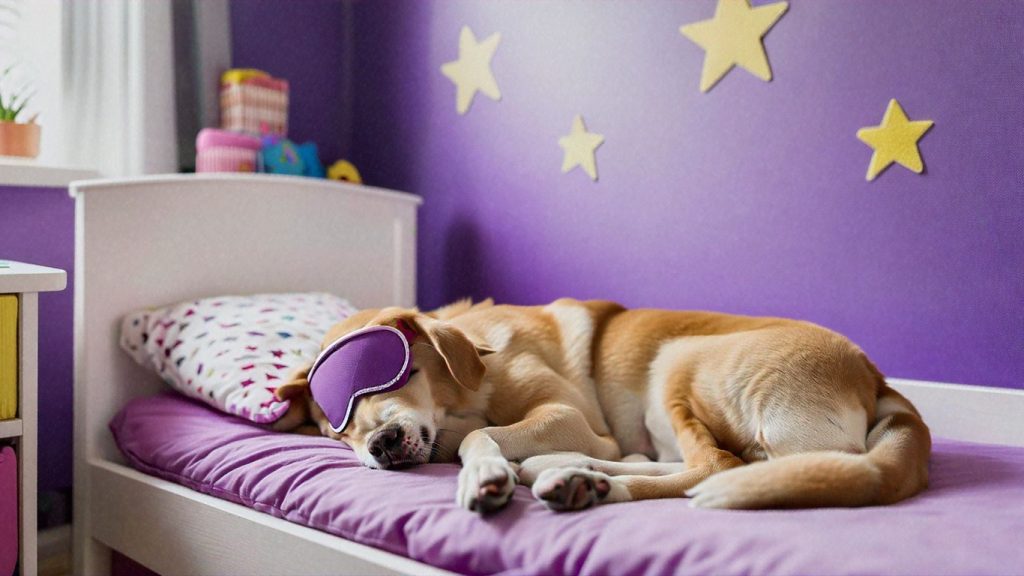
Science cannot yet turn a dog’s dream into a movie reel we can watch, but the clues point in a clear direction. The continuity hypothesis of dreams suggests that dream content reflects waking life. For humans, that may mean revisiting work, family moments, or recent stressors. For dogs, it most likely means reliving play sessions, meals, and—most importantly—time spent with their humans.
Owners often notice telltale signs:
-
A paw twitch echoing the rhythm of a chase.
-
A whimper reflecting a command practiced earlier that day.
-
A wagging tail suggesting pure joy, perhaps from a walk or cuddle.
Experts agree. Psychologist and canine researcher Dr. Stanley Coren has long argued that dogs dream about everyday events, much like people. Harvard psychologist Dr. Deirdre Barrett adds that because dogs are deeply bonded to humans, their dreams probably center around our faces, our scents, and the desire to please—or occasionally frustrate—us.
Since smell dominates a dog’s waking life, it’s possible that their dreams are rich not only in imagery but in scentscapes: the smell of their owner’s clothing, the aroma of a favorite park, or the trace of another animal carried on the breeze. For a species whose reality is built on scent, dreaming may be as much about smells as it is about sights and sounds.
Do Dogs Really Dream About Us?

For many dog owners, the most heartwarming possibility is not just that dogs dream, but that they dream of us. Science strongly suggests this is the case. Dogs live in such close partnership with people that it’s only natural their dream content reflects the humans who shape their days.
The continuity hypothesis explains why: dogs’ waking lives revolve around their caregivers—the one who fills their food bowl, clips the leash, tosses the ball, and offers a comforting hand. According to Dr. Barrett, dogs likely dream of “your face, your smell, and of pleasing or annoying you.” In other words, you are not a background character in their subconscious—you are the lead role.
Biology supports this deep connection. Dogs, like humans, have an amygdala, the brain’s emotional processing center. This means that when they dream of walking with you, they’re not only replaying the physical act of walking but also reliving the emotions of joy, security, and companionship that come with it.
Dream patterns vary by size:
-
Small dogs may dream of their humans often but in short bursts.
-
Large dogs may weave entire daylong narratives into their longer dream sequences.
-
Puppies, who are forming attachments and learning quickly, may dream of their owners most of all, replaying bonding moments over and over.
Nightmares and Disturbances
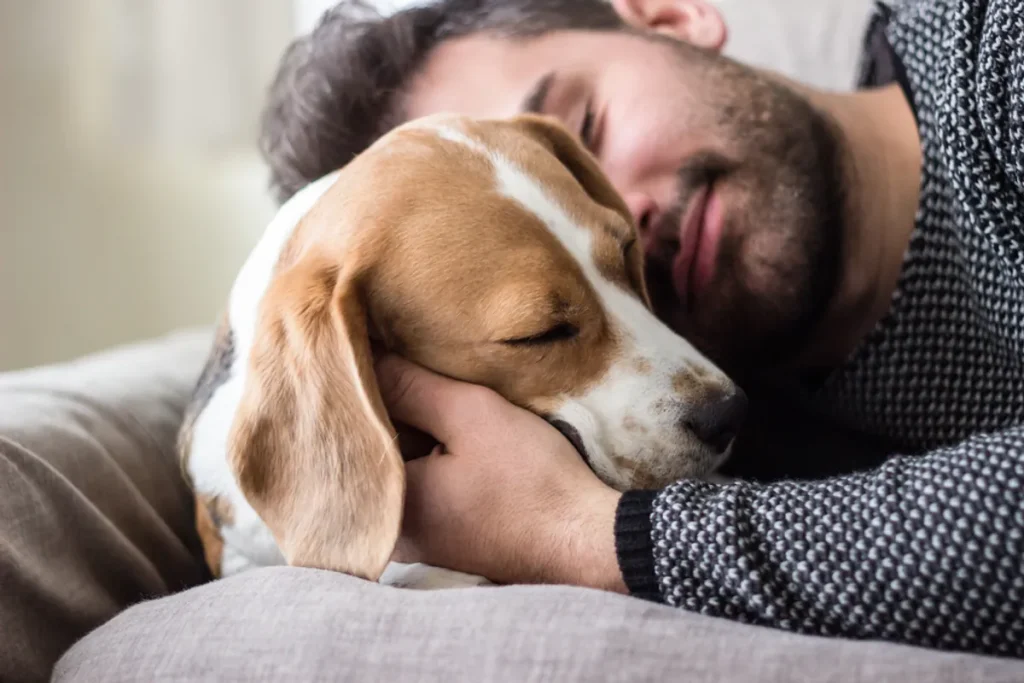
Of course, not every dream is a joyful rerun of park visits and belly rubs. Dogs, like humans, can carry stress and anxiety into their sleep. A dog that whines, growls, or thrashes at night may be reliving a fearful experience—a storm, a vet visit, or the stress of separation.
Veterinarians emphasize that canine nightmares are not symbolic in the way human dreams sometimes are. They usually replay specific unpleasant events. Because the amygdala stays active during REM, these fears can re-emerge vividly.
It’s important not to startle a dog awake during a nightmare, as this can leave them disoriented or defensive. Instead, let the dream pass or gently call their name from a safe distance. Owners should also distinguish between dreaming and medical conditions like seizures, which involve rigid, rhythmic movements and longer lapses of consciousness. If troubling episodes are frequent, a veterinary checkup is wise.
How Owners Can Shape a Dog’s Dream World
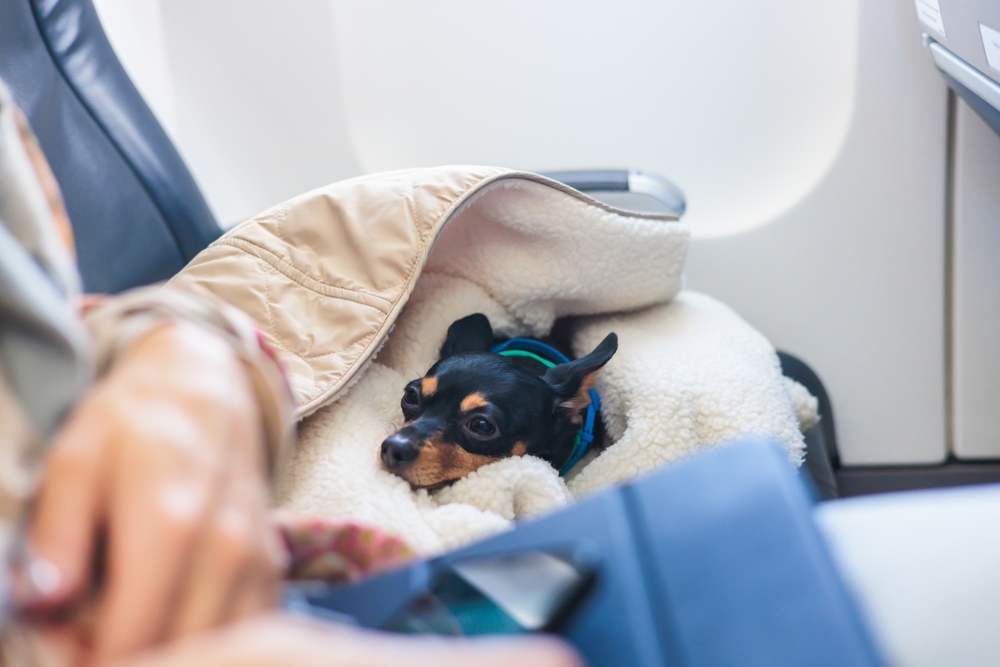
If dreams are stitched from daily experiences, then every walk, cuddle, and training session becomes raw material for the night. Owners play a vital role in shaping not only a dog’s waking life but also the quality of their dreams.
-
Fill days with play and exploration
Active play, outdoor walks, and new environments provide mental stimulation. Engaged dogs are more likely to experience deep, healthy REM sleep. -
Keep routines consistent
Predictable feeding times, exercise, and bedtimes create security, reducing anxious or restless dreams. -
Provide a restful sanctuary
A quiet, cozy sleeping area with familiar scents helps dogs slip into deeper sleep cycles. -
Enrich their minds
Training, puzzle toys, and scent games challenge the brain, ensuring dream content is positive and stimulating. -
Reduce stress
Positive reinforcement, patience, and calm home environments lower daytime anxiety, leading to gentler, happier dreamscapes.
What Dog Dreams Reveal About Us

Philosopher David Peña-Guzmán has argued that animal dreams highlight the inner lives of non-human creatures, urging us to recognize their sentience. Dogs may dream differently—through scent as much as sight—but that does not make their dreams less meaningful. If anything, it underscores how unique and deeply personal their dream world is.
When your dog dreams of you, it shows how profoundly you are woven into their life story. Their devotion is not limited to daylight hours—it extends into the quiet hours of sleep. Every skipped walk, every warm cuddle, every hurried goodbye, and every patient game of fetch may echo in their subconscious. Dreams remind us that the bond we share with them shapes not only their waking behavior but also their hidden inner worlds.
Love That Lasts Beyond the Day
So, the next time your dog twitches in slumber, remember: you may be right there beside them in spirit. Their dreams are not random sparks of brain activity; they are echoes of life shared with you—routines, adventures, worries, and above all, love.
For dogs, whose lives revolve so faithfully around their humans, our presence extends even into their hidden nighttime adventures. Every walk, every kind word, every gentle touch builds the raw material of their dreams. In return, their dreaming loyalty reminds us of the profound power of companionship.
Love, once given freely, does not end when the day does. It follows them into the night, into their dream world, where you are not just part of their story—you are the star.
News in the same category


Weird Toothed Part on Kitchen Scissors
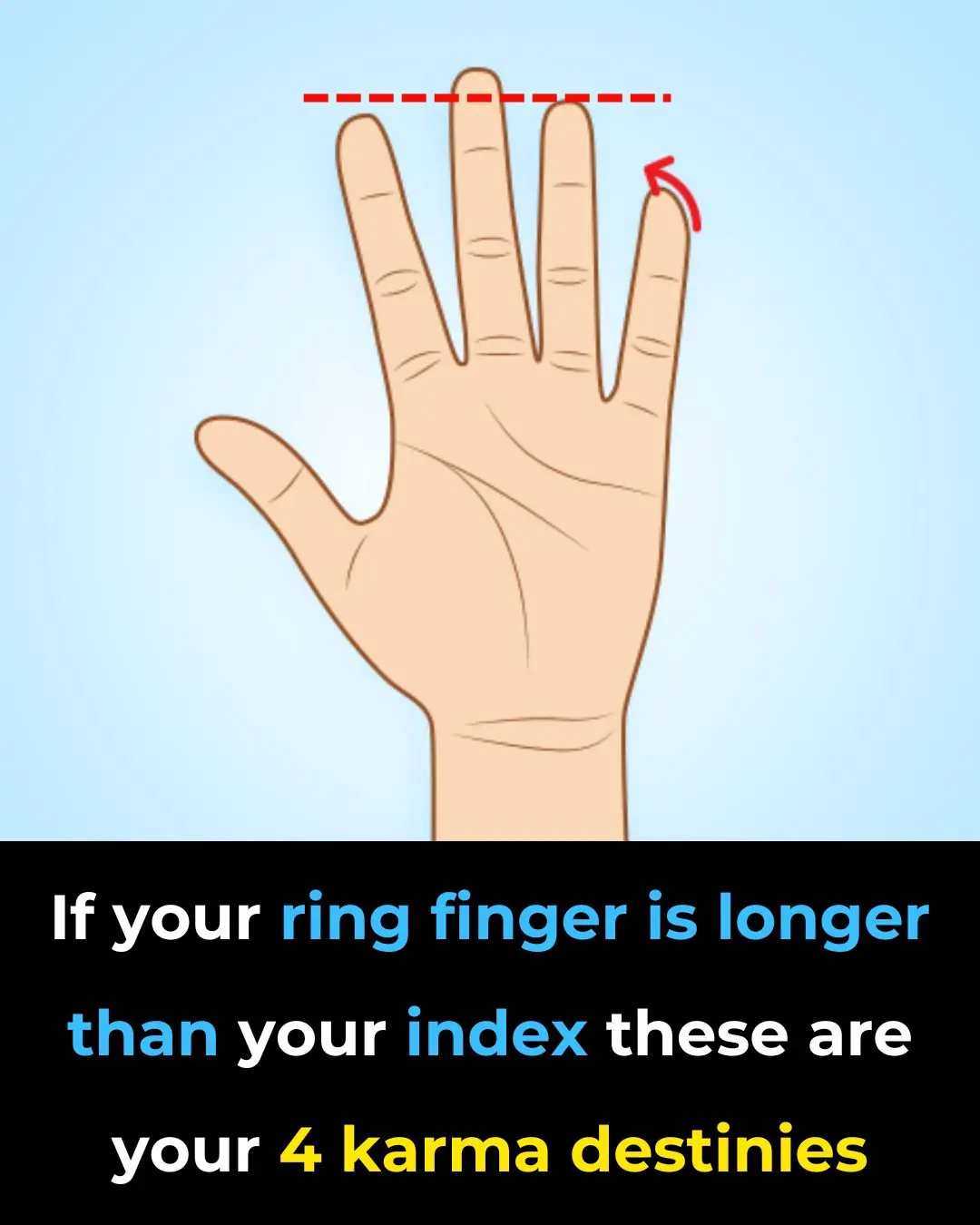
Ring Finger Longer Than An Index Finger

The Story Behind Two Runaway Graves in Savannah Airport

The Simple Object That Might Baffle the Younger Generation

Why Public Bathroom Doors Don’t Reach the Floor – The Real Reason Revealed
The gaps and inward-swinging doors are designed for practicality, serving purposes like enhancing safety and improving efficiency, rather than being the result of poor design.

World’s Oldest Woman Lived to 117 By Eating the Same Meal Every Day
Emma Martina Luigia Morano, the world’s oldest woman at the time of her passing, credited her extraordinary 117 years of life to a mix of genetics, resilience, and one very peculiar daily diet. Her remarkable story spans two World Wars, personal tragedy
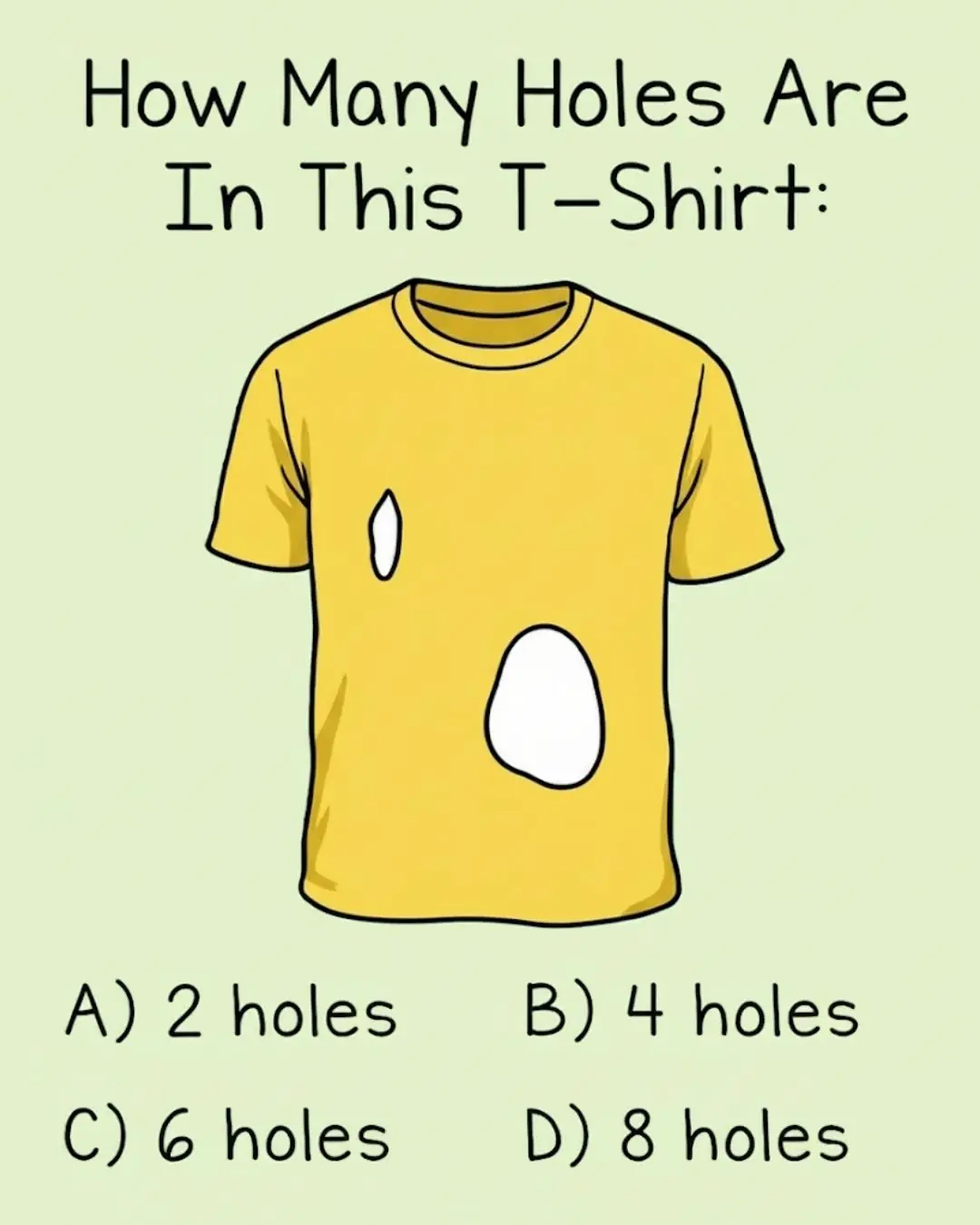
Simple T-Shirt Image Is Driving the Internet Crazy

Rare 9/11 Footage Reveals Heartbreaking Close-Up of Second Plane Striking Tower

Here’s Why Many Couples Start Sleeping In Separate Beds After 50

Hotel Room Red Flags You Should Never Ignore
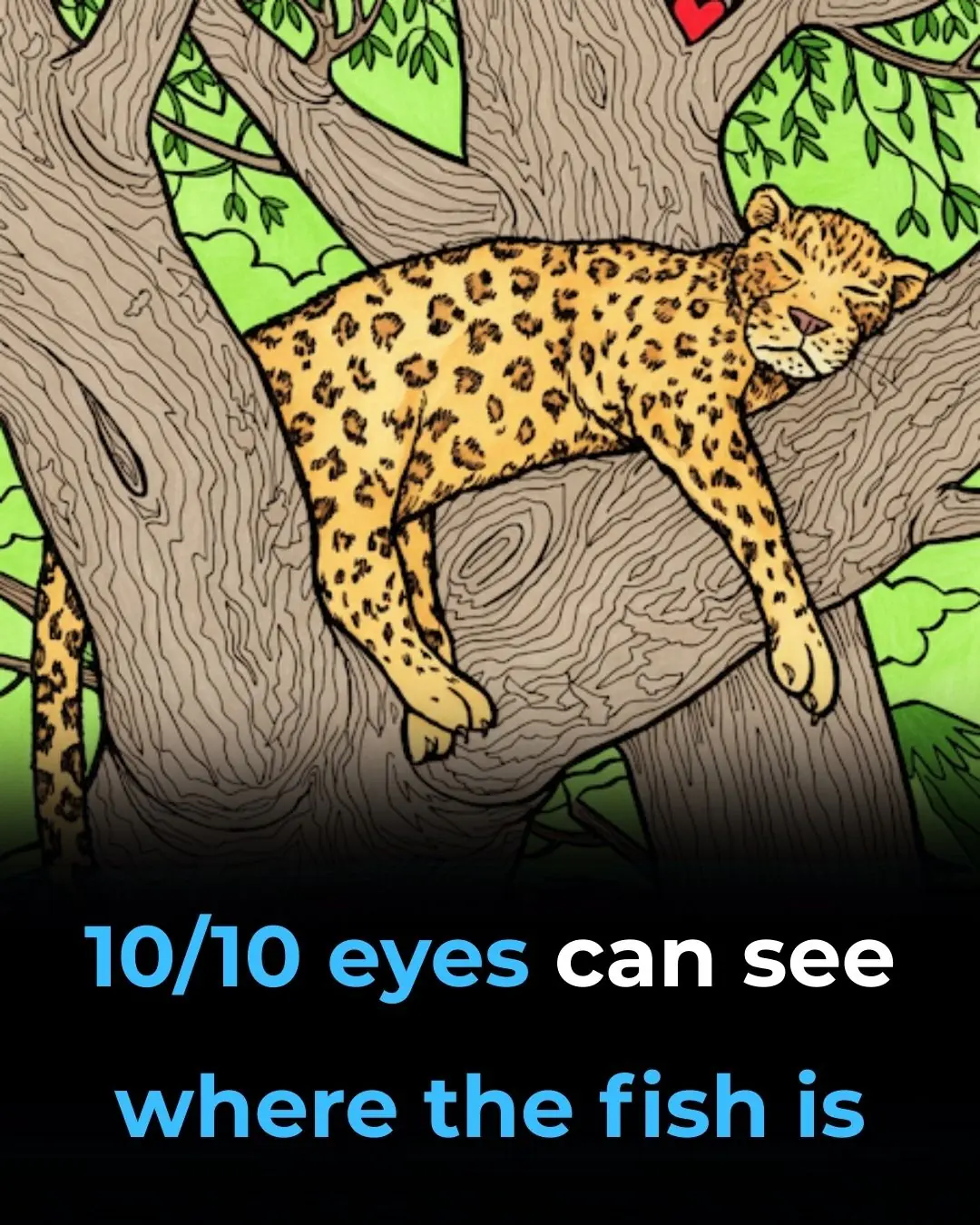
The Hidden Fish Puzzle That’s Stumping the Internet
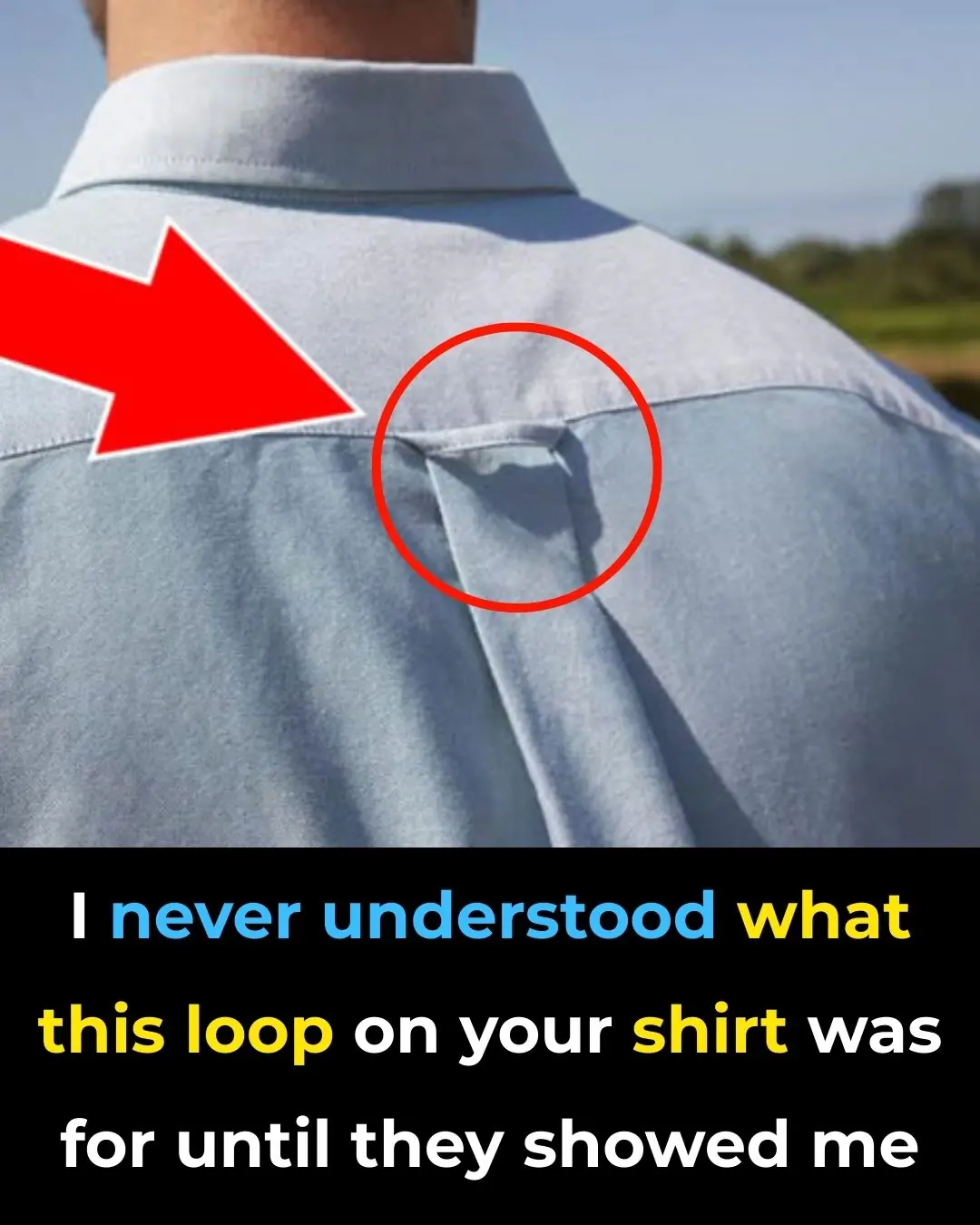
What Are the Loops on the Back of Button-Down Shirts For?

‘Folded Boy’ Miraculously Stands Tall After Years Living With 180° Spine Bend
For over a decade, a young man in China lived with his body bent nearly in half, trapped in a painful “Z-shaped” posture that made everyday life a struggle. Now, after years of suffering and a series of groundbreaking surgeries, he has finally stood u
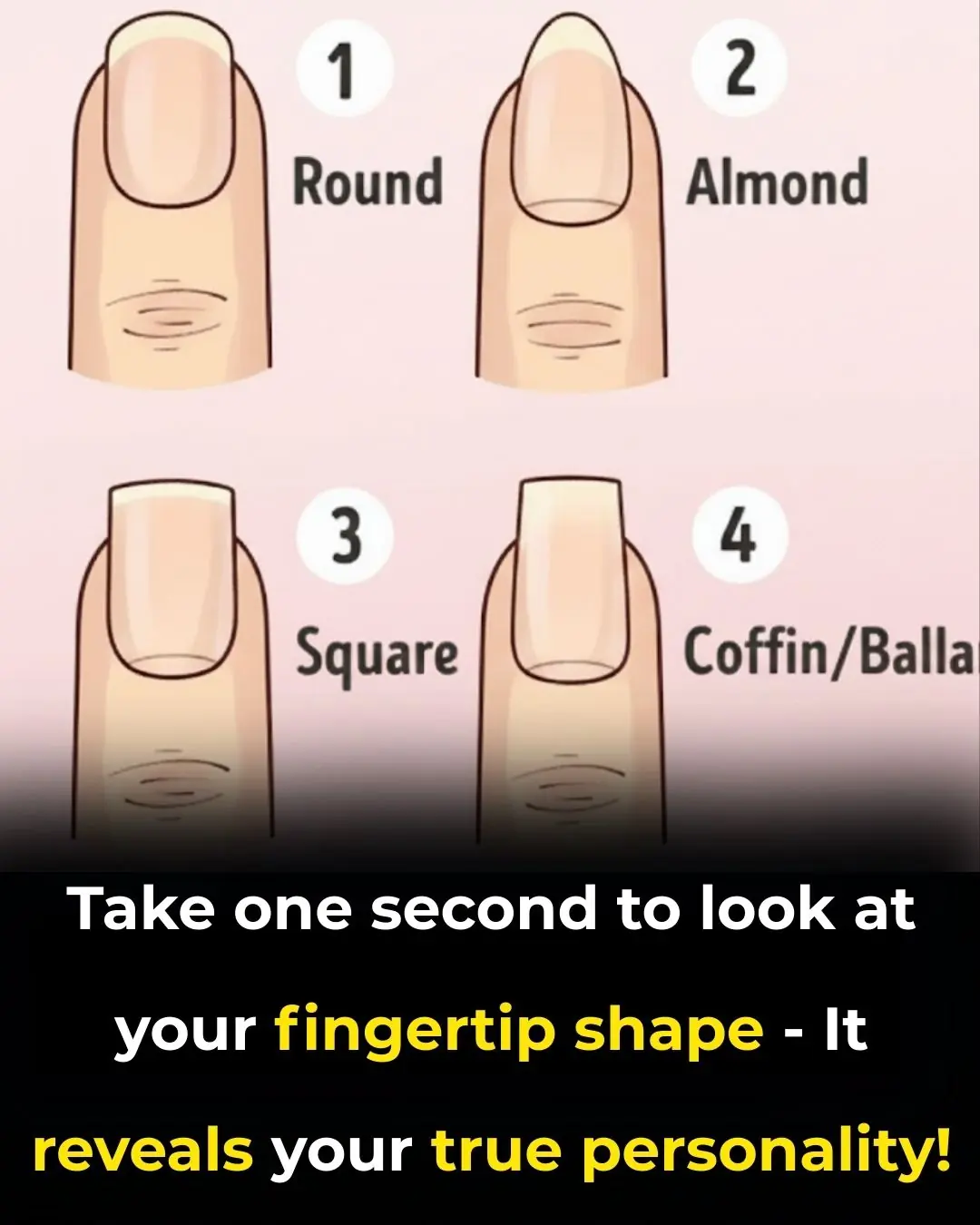
The shape of your fingertips reveal your true personality

Lonely In Old Age

Japan Unveils World’s First Artificial Womb, Enabling Embryos To Grow Outside The Human Body
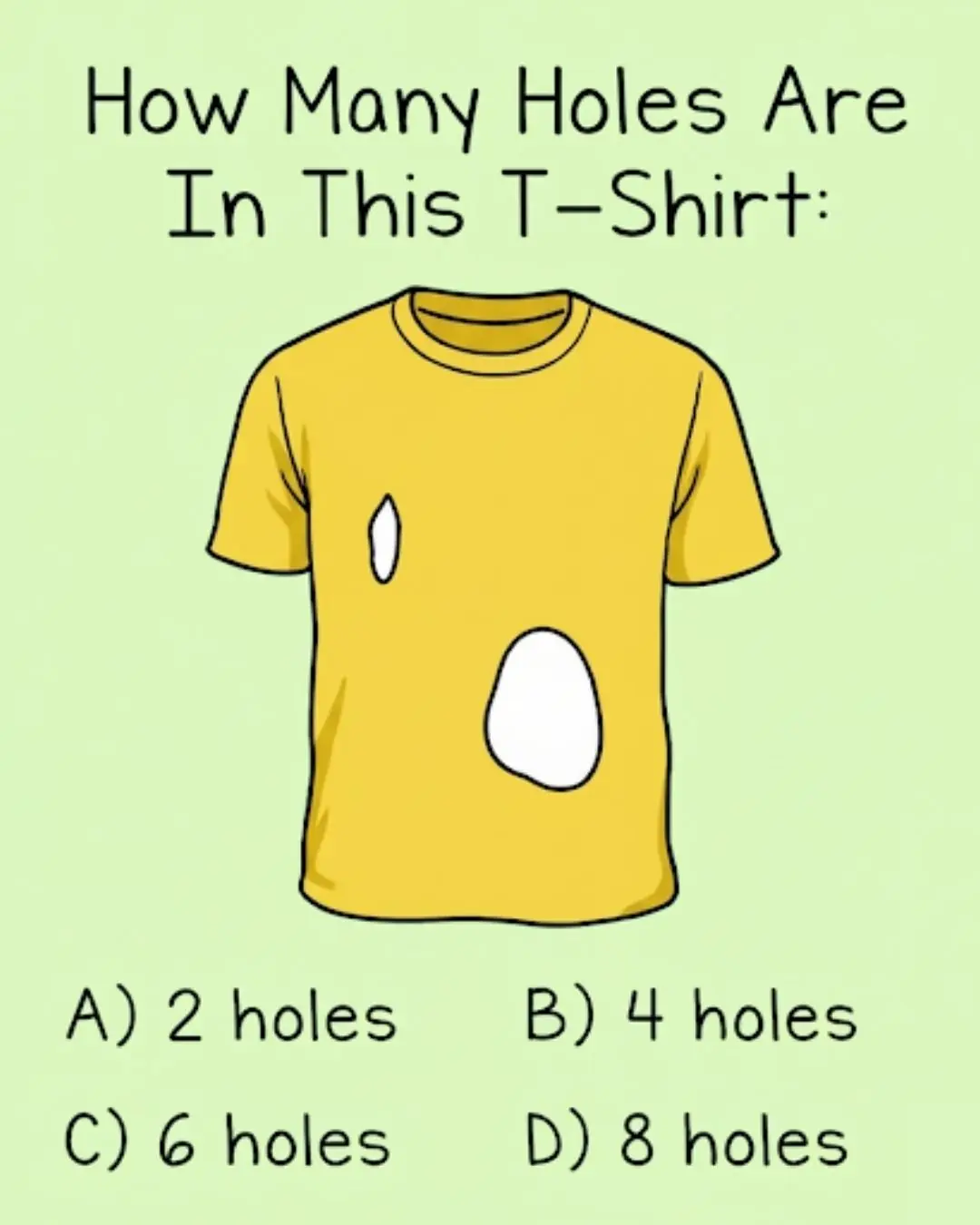
Simple T-Shirt Image Is Driving the Internet Crazy

Couple’s Walk Leads to a Rare $70,000 Ambergris
News Post
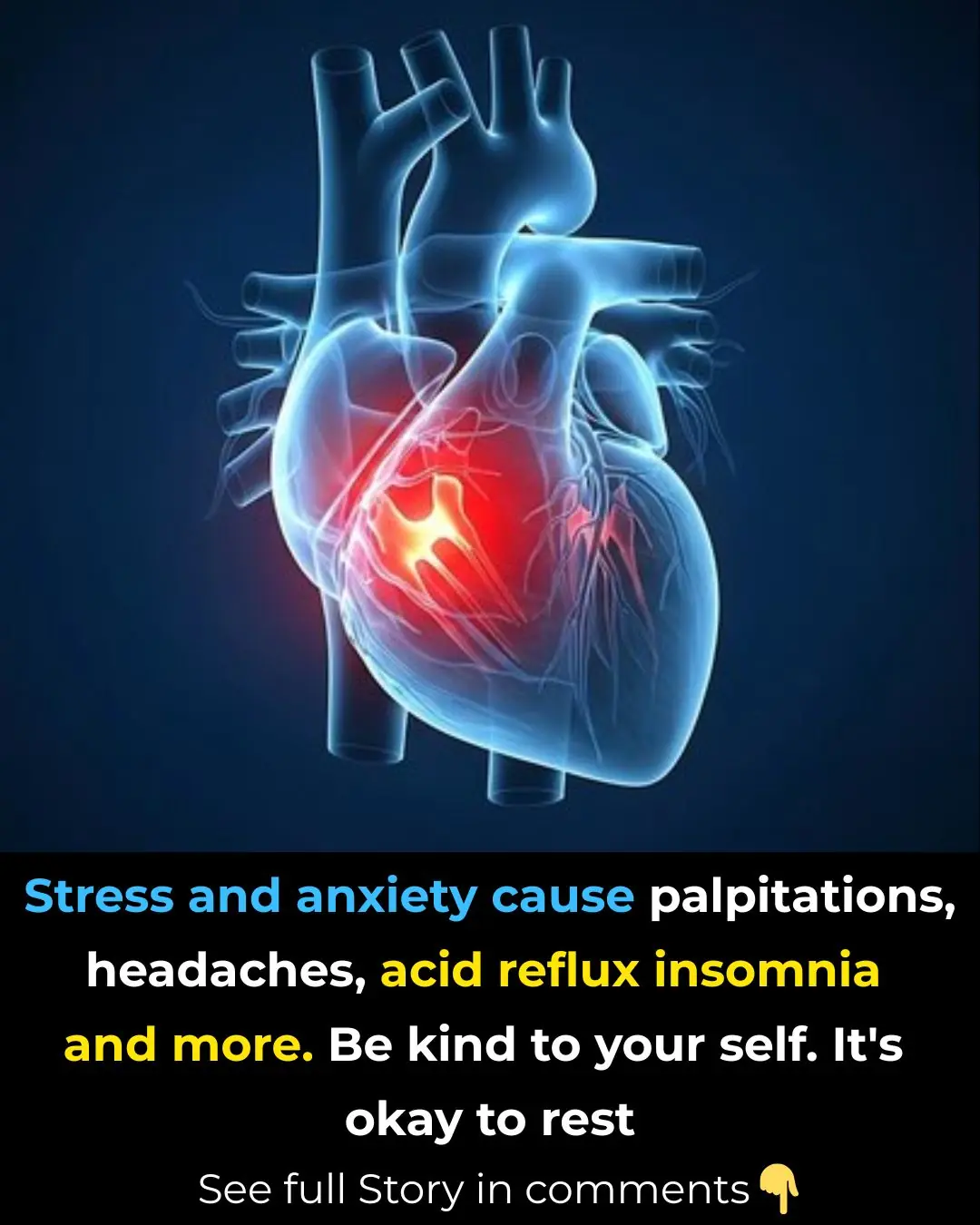
Symptoms That Can Be Caused by Stress

What the Shape of Your Legs Might Say About Your Personality

How surgeon who amputated his own legs was caught as he's sentenced to 32 months in prison

PlayStation handing out rare refunds to gamers over popular new game

🌿 17 Health Conditions That May Benefit from Guava Leaf Tea + Easy Homemade Recipe

If your non-stick pan has lost its coating, don't rush to throw it away: Just do this, and you can fry and cook without it sticking or falling apart.

The golden 4-hour window for drinking coffee helps your body gain maximum benefits: detoxifying the li:ver and promoting smooth digestion.

Eating boiled bananas at this time, after just 1 week, your body will experience 7 changes

Add potato to coffee to get rid of wrinkles in just 1 week

Homemade Rice water & Methi Dana Toner for Glowing Skin

The DIY anti-ageing cream that is very effective to get rid of wrinkles and fine lines on your face

Herbal Remedies for Strong, Lush Hair: Easy Recipe Everyone Can Make At Home

Flaxseed Gel for Wrinkles: The Natural DIY Solution for Smoother, Youthful Skin

10 Tomato Slice Skincare Remedies for Wrinkles, Pores, and Glowing Skin: Natural DIY Treatments

Super Effective DIYs to Achieve Soft, Pink, and Perfect Lips

A Scientific Look at Oregano’s Role in Supporting Wellness

Reverse Hair Greying Naturally: Effective Treatments and Remedies for Restoring Hair Color

The Incredible Benefits of Plantago lanceolata and How to Use It

CCF Detox Drink For Glowing Flawless Skin
